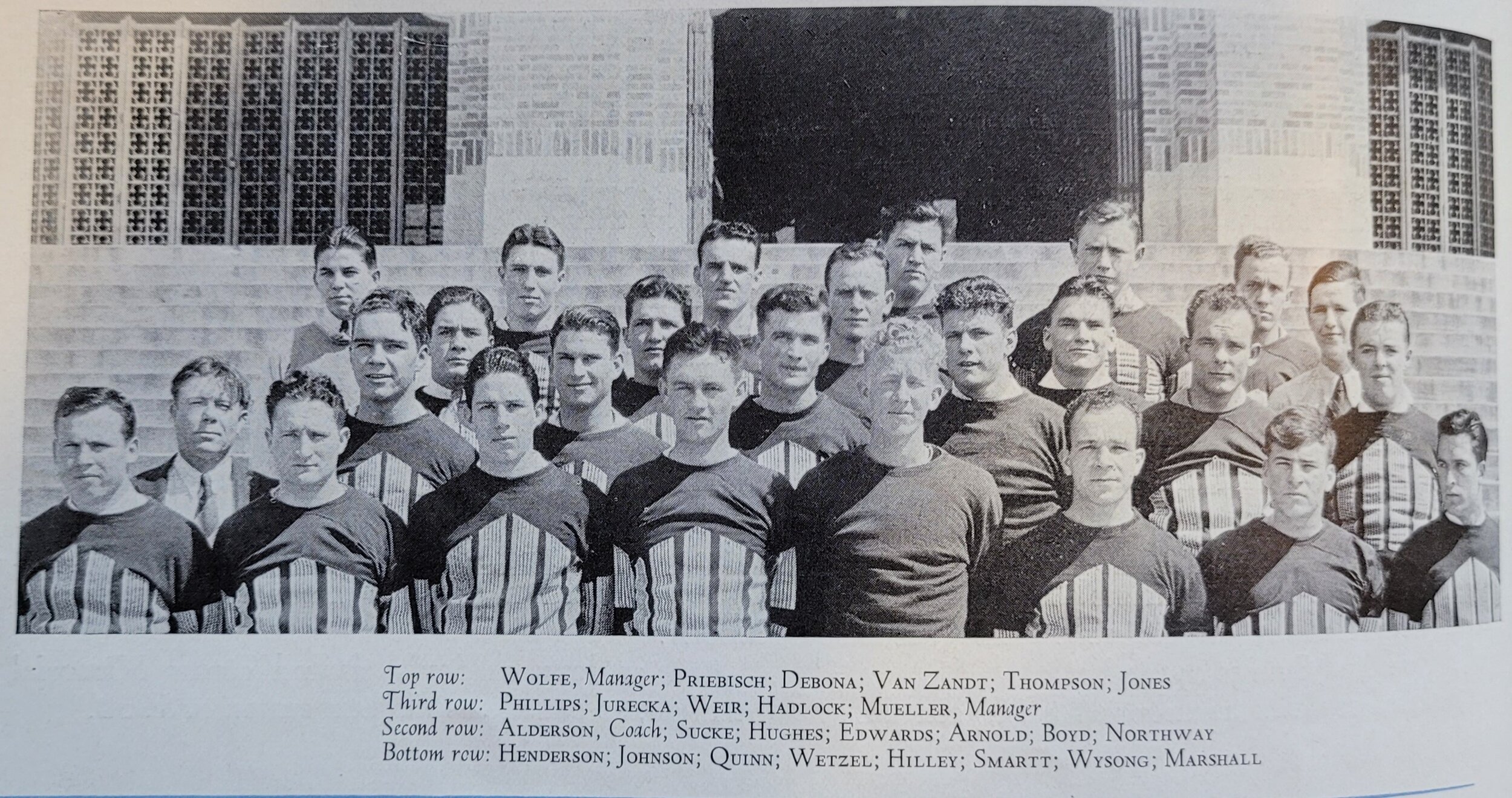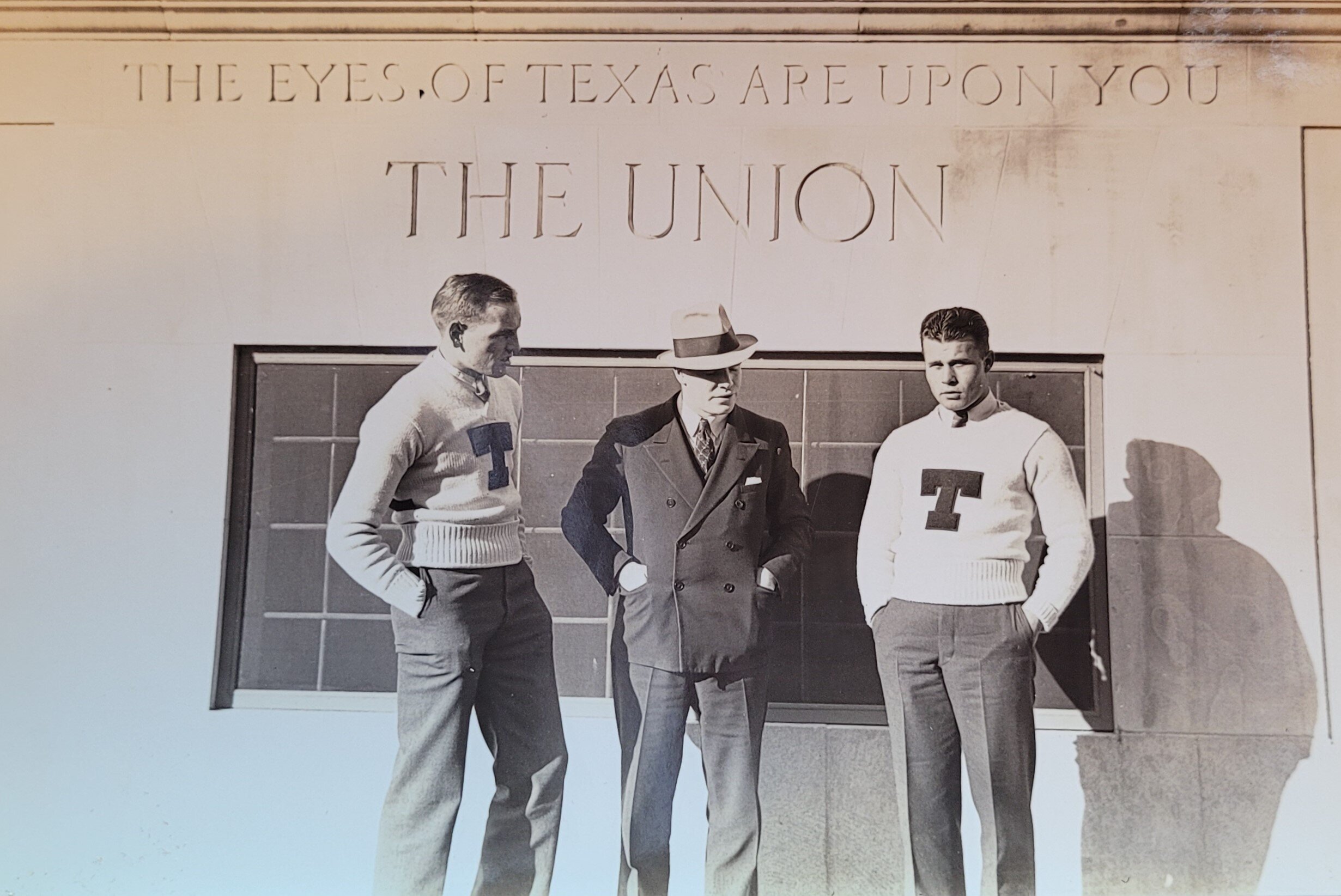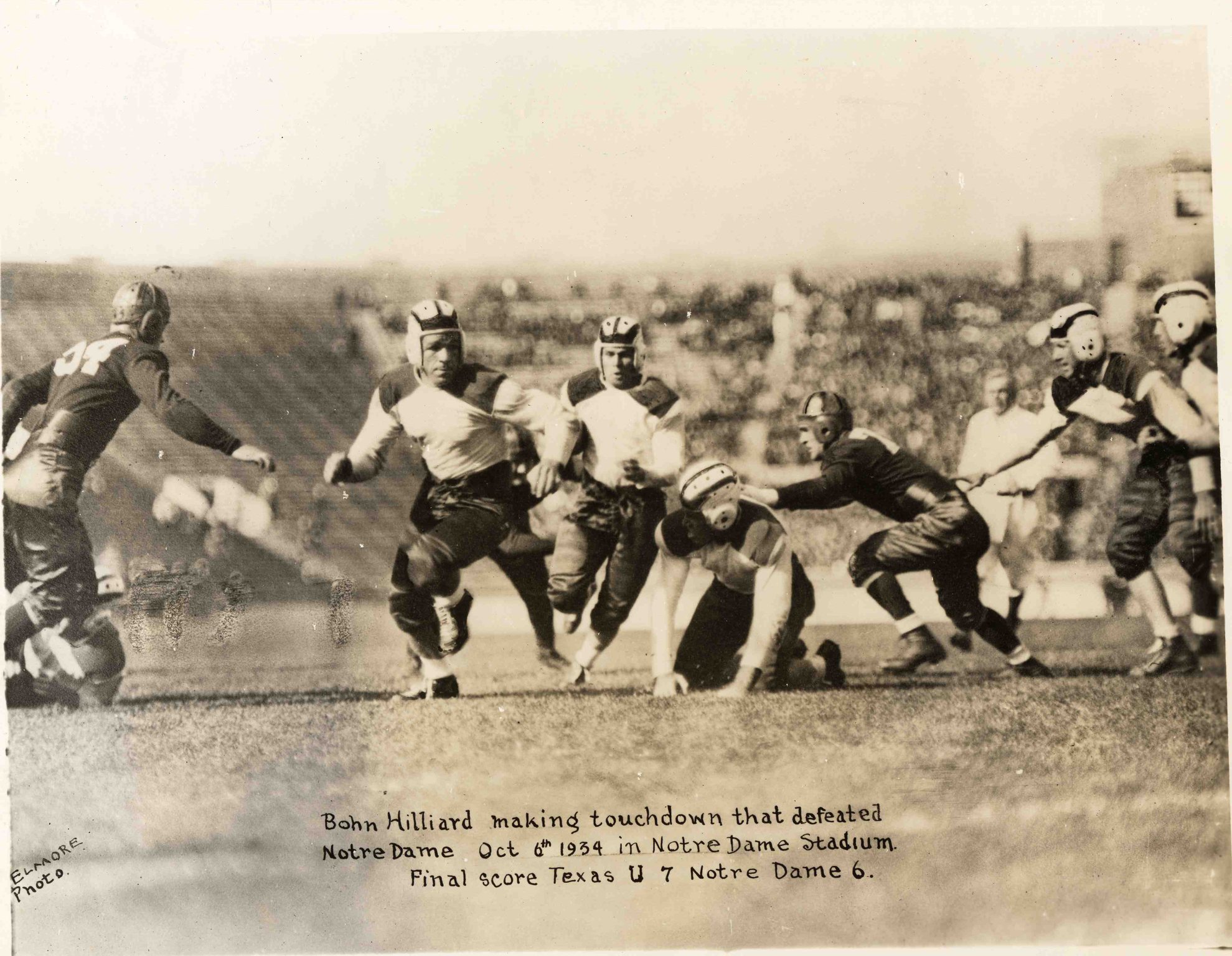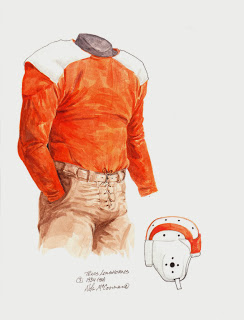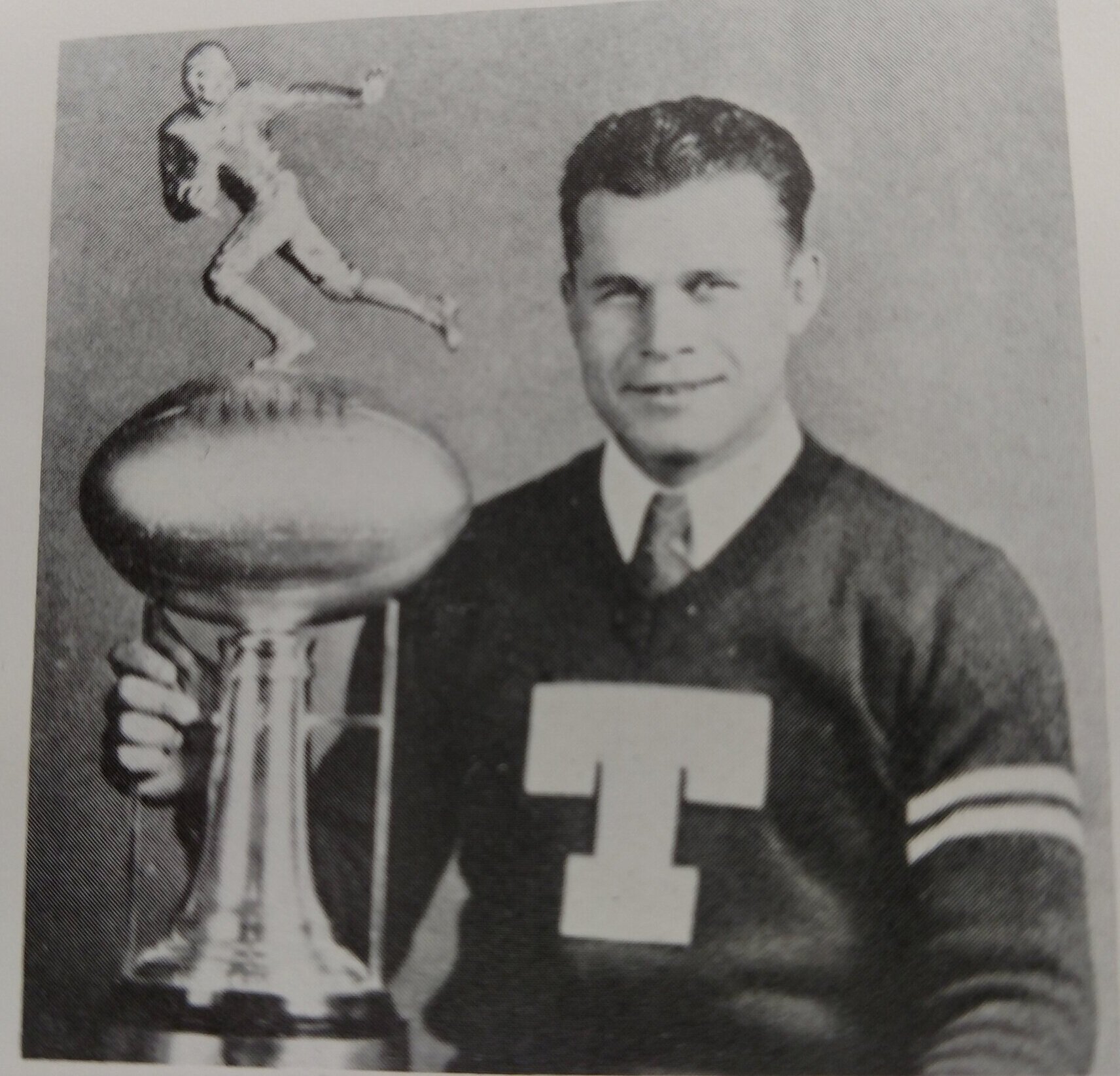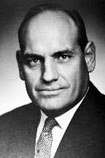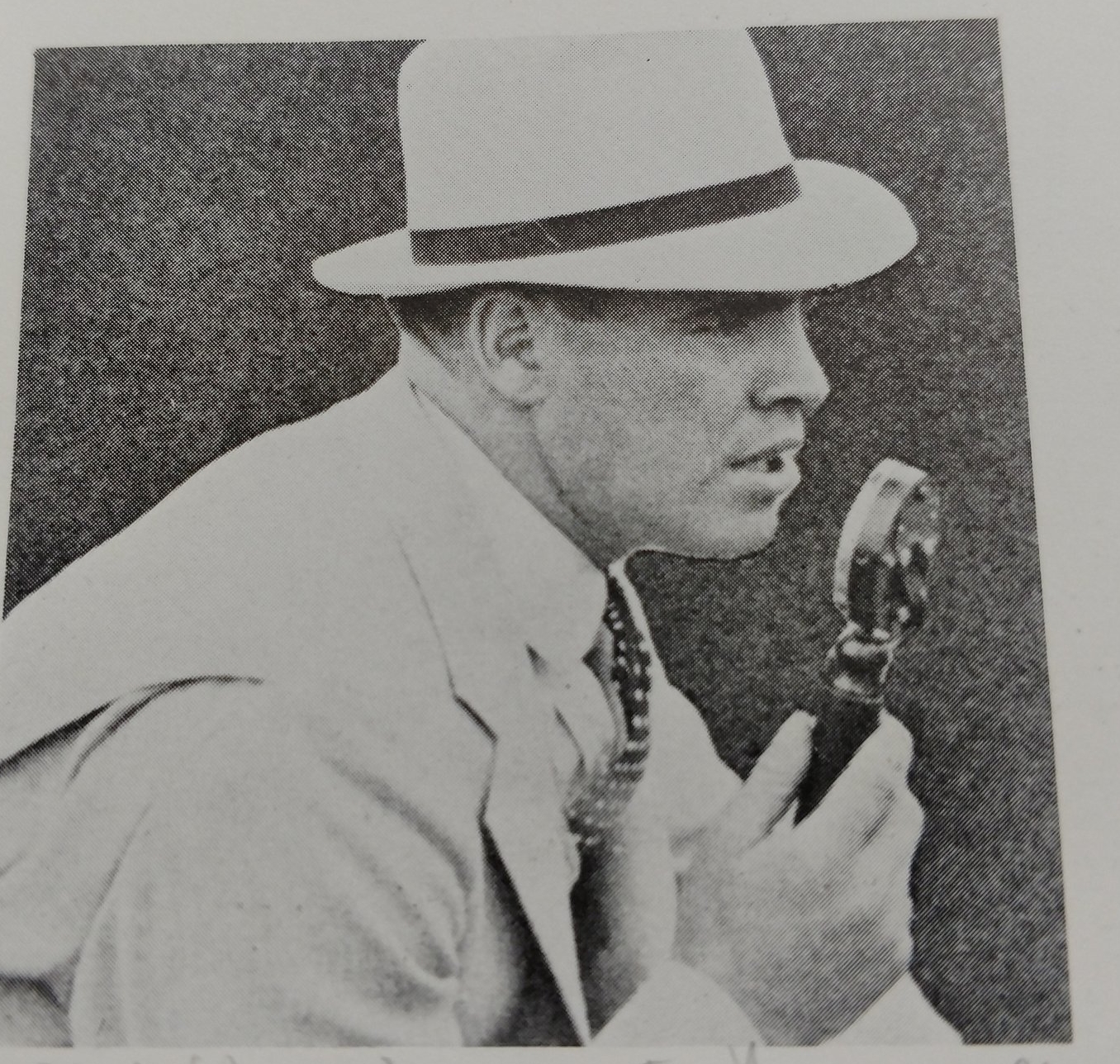Chevigny the Showman- 1934-1936
1933 - Chevigny is the Head Coach at St. Edwards. His magnetic personality won over the city of Austin and the sportswriters loved his persona saying “there is no doubt that Chevigny is a coaching wizard.” When Littlefield resigned the Athletic Council chose two coaches to interview with the Board of Regents for the Texas job. Like DKR did 24 years later, he won over the hearts and minds of the U.T. Regents and more importantly the Longhorn fans.
1934- 7-2-1 New Head Coach Jack Chevigny
Coach Chevigny tried to convince the Board of Regents to cancel the Notre Dame game because he did not relish the idea of playing his alma mater.
top row: Wolfe, Priebisch, Debona, Van Zandt, Thompson , Jonesw
third row: Phillips, Jurecka, Weir, Hadlock, Mueller,
second row: Alderson, Sucke, Hughes, Edwards, Arnold, Boyd, Northway
bottom row: Henderson, Johnson, Quinn, Wetzel, Hilley, Smartt, Wysong, Marshall
National champion in 1936 beat the Horns in Austin 47-19, but Hugh Wolfe rand a kick back 95 yards for a touchdown. A record that stood for 42 years. Wolfe said, “Shirley Temple could have made that touchdown. He faked left and ran right and saw nothing but daylight.
Notre Dame coach Knute Rockne said the “Chev” was the best right halfback in Notre Dame history.” “He was one of the greatest Irish blockers of all time and a defensive ace.” In 1933 Chevigny took a coaching job at St. Edwards for $4200 a year. In 1934 UT hired “Chev” to replace Clyde Littlefield as the head football coach.
In 1928 “Chev” played in the famous Army-Notre Dame game. The game is now famous for the “win one for the Gipper” comment. The game was scoreless until Jack Chevigny scored. Jack threw the ball high into the air and then said “there’s one for the Gipper”.
With a score of 6-6, Notre Dame fumbles and Jack recovers the ball. The recovered fumble leads to a touchdown and a 12 to 6 win over Army. This was Jack Chevigny’s best game as a player.
Jack Chevigny is the Texas new Head Coach.
As of 2013, Chevigny is the only head coach at Texas with a losing record.
1934- 8000 fans showed up at Gregory Gym to support the Horns pending game against Notre Dame
The first Orange White scrimmage is played before 4000 fans on Round Up Week-end.
Notre Dame has not lost a season opener in 38 years until Texas beat Notre Dame 7-6 in 1934. The game is considered one of the biggest upsets of all-time in college football. After the game, the Coach is given a new car.
An important year for SWC football. Rice beats powerhouse Purdue and Texas is a victor over Notre Dame. The SWC had finally won some respect. 20 years after the formation of the SWC, all the teams played each other for the championship. Exactly how the big 12 plays now vs the SEC who had two divisions and not all teams play each other.
This was the year that demand for game tickets exceeded the seating capacity of the stadiums. So a sidebar broadcast system was created and controlled by the conference to make sure that those who could not get a ticket could listen to the game.
Coaches new LaSalle coupe car given to him by the Civic Testimonial Banquet attended by the Governor, the Austin mayor, UT President and 300 fans.
Humble Oil sponsors the nation’s first broadcast network and features SWC football on the Radio. Kern Tips voice boomed thru all kinds of retail establishments, and fans huddled around the radio at home to hear his voice convert words into pictures.
The coach starts the tradition of the players staying together before a game. -not in a hotel- but on a Pullman Coach car.
1906 Old Main
Old Main building
Coach Chevigny in Reflection
It is unfortunate that Chevigny beat Notre Dame because the win resulted in fool’s goal for the rest of his tenure at Texas. Don’t get me wrong. The players liked him, and the girls swooned. He had a gift for oratory, but some said his speeches were phony. An Austin sports writer said Jack “has a magnetic personality which makes friends on all sides.” But he was not a good recruiter or a head coach. Chevigny was unpopular among the Texas high school coaches who accused him of teaching dirty football.
The author shares the following story in the book “40 Acres Follies” by Joe B. Frantz. Once he burned all the bridges with the leaders of sports at Texas, the Longhorn administration, led by the Chairman of the Athletics Council, Dr. James C. Dolley, went on the attack to hire Coach Bible. With Regent Stark's support, Dolley devised a financial game plan to hire Bible away from Nebraska.
1935- 4-6 Coach Jack Chevigny- Texas is in the SWC cellar
1935 is the year that the “golden” boys of football arrived. It took the Longhorn teams a while to participate in this new form of hero worship.
He was an innovator and proactive thinker if not a good coach. He bought a field cover to protect the grass on the football field and started filming games for study purposes. Under Chevigny, Texas had its first 'training table" and athletic dorm with a "dorm mother" by the name of "Ma Griffith". Ms. Griff required prayers before each meal. Tom Stolhandske said in the early mid-50’s “she walked around, and if she saw anybody acting up,…., she’d scoot behind them, grab them by the hair, pull their head back, and give them a real lecture.”
Ma Griffith - Dorm Mother
I was working in the chow hall in 1962 and believe she was still very much alive and present. At that time, Ma was mostly a figurehead. The dining room was being run (as I recall) by Ma’s daughter and son-in-law Jim Blaylock. As I recall he was the equipment manager in the athletic department. Ma’s “attacks” with her cane always drew approval from the athletes. Her dining table was outside the door to her apartment. Coaches and other athletic personnel ate with her. The table next to hers was occupied by upper-class football players so there was a lot of uproars when she “disciplined” one of those fellows. Frequently it might be the closest guy, not the one deserving, Jim Wilson 1962
Jack Collins holds the record for most return yards in a game (95).
J T King, later a UT assistant coach and eventually the head coach at Texas Tech for the 1961-1969 span, was a sophomore lineman on the 1935 team.
Sammy Baugh wanted to play for the Longhorns if he could play both football and baseball. Texas rejected his request, and Billy Disch put him on a train to Fort Worth.
Chevigny starts spending more time in his law practice than football practice. The Athletic Council gave him a warning telling him his first job was Texas, and UT leadership started monitoring the time allocated to the Longhorn team.
1936 2-6-1 Coach Chevigny
1936 the Associated Press came out with the first football poll.
“Howard Terry - Lineman/Linebacker 1935-1937. Started the Texas Longhorn Education Foundation.”
https://texas-lsn.squarespace.com/tring-reflections-1950s
The story of John Hendersen is at the link below.
In 1936 the Horns were bottom dwellers in the SWC. These were desperate times, but faith and a Bible were in the future.
SEPTEMBER 4, 2015
JACK CHEVIGNY: GRIDIRON STAR AND BATTLEFIELD HERO
SHARE
Coach Chevigny with Longhorn player Joe Smart
Sept. 4, 2015
By Craig Chval Sr.
Only two University of Texas head coaches have led the Longhorns to victory over the University of Notre Dame in the 10 games played between the two schools in a series that dates back to 1913 – and they named the football stadium after one of them.
But with all due respect to Darrell Royal, the late Texas Hall of Fame head coach whose name Longhorns’ stadium bears, Jack Chevigny, the only other UT head coach to defeat Notre Dame, may have led an even more remarkable life.
Chevigny died in combat at Iwo Jima, Japan on February 19, 1945, and his death reflected the way he lived his life – embracing the toughest challenges. From his days as an undersized star on Knute Rockne’s Fighting Irish teams to the Texas rookie head coach who got his players to believe they could pull off a colossal upset of his alma mater, to the successful lawyer and businessman who wouldn’t take no for an answer when an old football injury disqualified him from enrolling in the military during World War II, Chevigny lived life with a relentless and unflinching courage.
Born in Dyer, Indiana, Chevigny was the president of his graduating class at Hammond High School in 1924 before enrolling at Notre Dame, where he intended to follow in the career footsteps of his father, a physician. While Chevigny decided at Notre Dame that he might not be cut out for the medical profession, there was no question that he was just what Rockne was looking for in a football player.
As Rockne demanded of his best players, Chevigny was a terror carrying the ball, blocking for his teammates and on defense. Sportswriter Grantland Rice, who had earlier immortalized Notre Dame’s Four Horsemen, claimed that Chevigny had made the greatest tackle he had ever seen, preserving Notre Dame’s 1927 7-7 tie against Minnesota with a diving goal-line stop of the Gophers’ All-American fullback Herb Joestling.
The following season, Notre Dame brought a 6-2 record, mediocre by Rockne’s standards, into its game with undefeated Army. Few experts gave the Irish a chance to avenge their 18-0 loss to Army the previous season, and Rockne seemingly agreed, concluding that this was the perfect opportunity to deliver what has become arguably the most famous locker room speech in history.
At halftime of a scoreless battle in Yankee Stadium (although some accounts insist that the speech occurred before the game – there is practically a cottage industry devoted to attempting to distinguish fact from fable of Rockne’s speech), Rockne told his troops the story of Notre Dame All-American George Gipp’s deathbed request that Rockne someday ask one of his teams facing Army to “give it all they’ve got and win one for the Gipper.”
While many details of Gipp’s dying words and Rockne’s subsequent reference to them have been debated since Ronald Reagan (Gipp) and Pat O’Brien (Rockne) portrayed them in the 1940 film, Knute Rockne, All-American, some details are unquestioned. One is that with the Irish trailing Army 6-0 in the fourth quarter, Chevigny blasted into the end zone on fourth-and-goal from the Army one-yard-line to tie the score. There seems to be no serious dispute that Chevigny called out, “That’s one for the Gipper,” although accounts differ as to whether that occurred as Chevigny crossed the goal line or as he reached Rockne along the Notre Dame sideline.
As time wound down in the deadlocked struggle, Chevigny did all he could to ensure that Notre Dame delivered on Gipp’s request – after all, Gipp didn’t implore Rockne to have the Irish “tie one for the Gipper.” With Chevigny getting the bulk of the carries against the tenacious Cadet defense, the Irish reached Army’s 16-yard-line. Some accounts had Chevigny knocked out cold while making a tackle at some point after he scored the tying touchdown; others had Rockne taking him out due to injury and exhaustion just before Irish quarterback John Niemic threw a 32-yard touchdown pass to Johnny “One-Play” O’Brien on fourth down to give Notre Dame the upset victory and provide Reagan with a future political slogan.
Rockne called Chevigny one of the toughest players he ever coached, and proved that he wasn’t simply throwing out empty platitudes by adding Chevigny to his coaching staff upon graduation. Chevigny spent two seasons coaching the running backs, helping the Irish to undefeated national championship seasons in both 1929 and 1930. Upon Rockne’s tragic death in March, 1931, Chevigny was named Notre Dame’s “junior coach,” working alongside “senior coach” Hunk Anderson for one season while finishing his juris doctorate degree at Notre Dame’s Law School.
Chevigny spent two seasons as the head coach of the NFL’s Chicago Cardinals before taking the head coaching position at St. Edward’s University in Austin, Texas. In his lone season at St. Edward’s, which was founded by Notre Dame founder Fr. Edward Sorin, Chevigny’s squad won the Texas Conference Championship.
That season was enough to capture the attention of the University of Texas, which hired Chevigny as its head coach and athletic director in 1934. As fate would have it, Texas’ second game during Chevigny’s rookie season was on the road against Notre Dame.
Not only did the new coach promise his new players – coming off a 4-5-2 season – that they would defeat Notre Dame (even though the Irish had lost fewer combined games over the past two seasons than Texas had lost in 1933), but he provided a detailed blueprint as to exactly how they would accomplish the upset.
During the week leading up to the Notre Dame game, Chevigny sought to exploit a tendency for fumbles by Notre Dame’s return team. He had his kicker practice kicking to a specific spot, instructing his best tackler to be prepared to separate the return man from the ball with a jarring tackle. Chevigny promised his men that the resulting touchdown and conversion would be enough to win the game.
It happened just like Chevigny had promised – and his players had practiced. The Longhorns forced a fumble on the opening kickoff, converted the turnover into a touchdown, and made it stand up for a stunning 7-6 upset victory. It was Notre Dame’s first loss in a home opener in 38 years.
In an article that appeared in The Washington Star on January 2, 1978, the day Notre Dame would go on to upset number-one Texas in the Cotton Bowl to claim the national championship, former Notre Dame director of public information John V. Hinkel wrote that Chevigny greeted Notre Dame head coach Elmer Layden after the game with tears in his eyes, proud of the accomplishment of his Longhorn players, but hating that it came at the expense of his alma mater and his great friend Layden.
Chevigny’s first Texas team went 7-2-1, but his next two teams managed a combined six wins, and he resigned to become an assistant attorney general for the State of Texas. Chevigny also built a successful oil business. When World War II broke out, he was determined to serve in the military.
After being rejected numerous times due to a football knee injury, Chevigny finally was allowed to enlist in the U.S. Army. But after a few months, Chevigny got what he really wanted – he received a commission as a first lieutenant with the Marines.
The Marines made the most of Chevigny’s fame and matinee-idol looks, using him in publicity events and shoots. They also installed him as the head coach of their football team at Camp Lejeune, which was 0-2 before Chevigny took the reins. Under Chevigny, the squad, which often played before crowds of 15,000, won six of seven games, tying the seventh.
Chevigny’s success coaching football and his role as a physical training instructor at Camp Lejeune didn’t allow him to make the contribution that he longed to make. So Chevigny sought and received a transfer to a combat role in the Pacific theater.
According to Jeff Walker, author of The Last Chalkline: The Life and Times of Jack Chevigny (published by Wasteland Press in 2012 and available through Amazon), Chevigny told his brother Jules that, “He had to be there with the boys.”
Chevigny landed on Iwo Jima on the very first day of the five-week battle, which ultimately provided a critical U.S. victory against Japanese forces. The Japanese position was heavily fortified, costing 6,800 American lives, including Chevigny’s, who was killed within hours of landing on the beach.
To the end, and just as he intended, Chevigny was there for his boys.
Reflections
Coach Chevigny loses his job for three reasons.
His decision to recruit in the Mid-west instead of Texas Offended The Texas High School Coaches,
his losing record, and
his decision in 1936 to pull his starters when Texas was beating Baylor 18-0. Texas lost 21-18.
Chevigny also had a law practice and on occasion, did not show up for practice.
CHEVIGNY IS KILLED ON IWO JIMA IN WWII. HORNS UP!
Another legend surrounding Chevigny is that, after the 1934 football victory, he had been presented a fountain pen with the inscription, "To Jack Chevigny, a Notre Dame boy who beat Notre Dame", and that on September 2, 1945, this pen was discovered in the hands of one of the Japanese officer envoys at the surrender of Japan on the battleship USS Missouri. The pen was sent back home, and the inscription was changed to read, "To Jack Chevigny, a Notre Dame boy who gave his life for his country in the spirit of old Notre Dame". The legend, which surfaced in 1945 in conjunction with the anniversary of the November 10, 1928 football game, has been a part of Notre Dame lore ever since. However, no one in the Chevigny family has seen or confirmed the existence of the pen, or that the inscription was changed.



